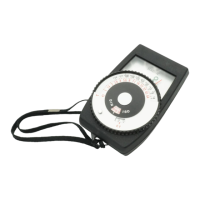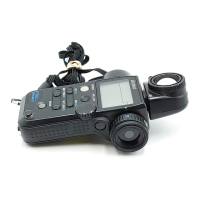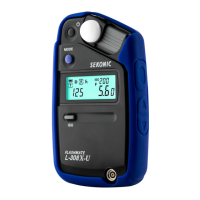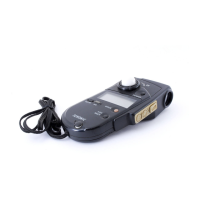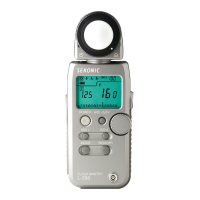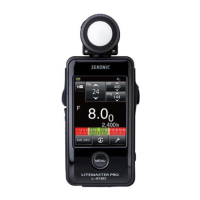· Set film speed-ASA or DIN
· Set pointers (Triangles) for, "Cover Closed' "Cover Open' or "Cover Open and Booster Open "
· Point meter toward object or subject.
· Place chaser bar with orange circle, aver pointer, then choose your f / stop and shutter speed.
· Because of the expert craftsmanship and the. highest grades of materials used, you may expect this meter to
give you many years of satisfaction. Also, due to the high rating ASA 6 to 12 thousand, this meter will not
become outmoded due to higher emulsion speeds being steadily raised by manufacturers. SEKONIC Tokyo,
Japan
WHAT IS A PHOTOELECTRIC EXPOSURE METER?
Briefly described, a photoelectric exposure meter is a precision instrument which, by means of a photoelectric
cell or cells, measures primarily brightness level. It also provides that the measured brightness be translated into
photographic factors for the determinations of the correct exposure of sensitized film.
It is important that the beginner appreciate that, although this instrument is infinitely superior to the human eye
in evaluating the intensity of light, it has no magical powers. The human eye focuses sharply at a small angle, it
is sensitive to light but also possesses the power of accommodation to various levels of lighting. It is well
known that this accommodation takes some time, as long as two hours. On the other hoed, the photoelectric cell
is extremely sensitive to the slightest variance in light intensity and records this instantly.
However, the meter provides only an average of all the various light rays from the highest to the darkest parts of
angular field it was designed to cover. It does not "see" specific high lights, shadows, colors, etc.
In the hands of a thoughtful photographer, the Sekonic Auto-Leader L-38 meter is indispensable far determining
consistently the correct exposure under all conditions of lighting. Read the instructions carefully. Make
experimental exposure factors In this way, you will soon achieve complete mastery of the all-important
photographic problem-correct exposure.
Study the diagram an the opposite page.
There are two photoelectric cells, the
main cell and the amplifier cell. The
latter is called the "Flip Up Boaster." It
is not operative until it is brought to the
right angle position as shown in fig. A.
Each photoelectric cell is covered with a
lenticular window which permits light
coming from a certain angular field to be
focused through a baffle on the
photoelectric cell below.

